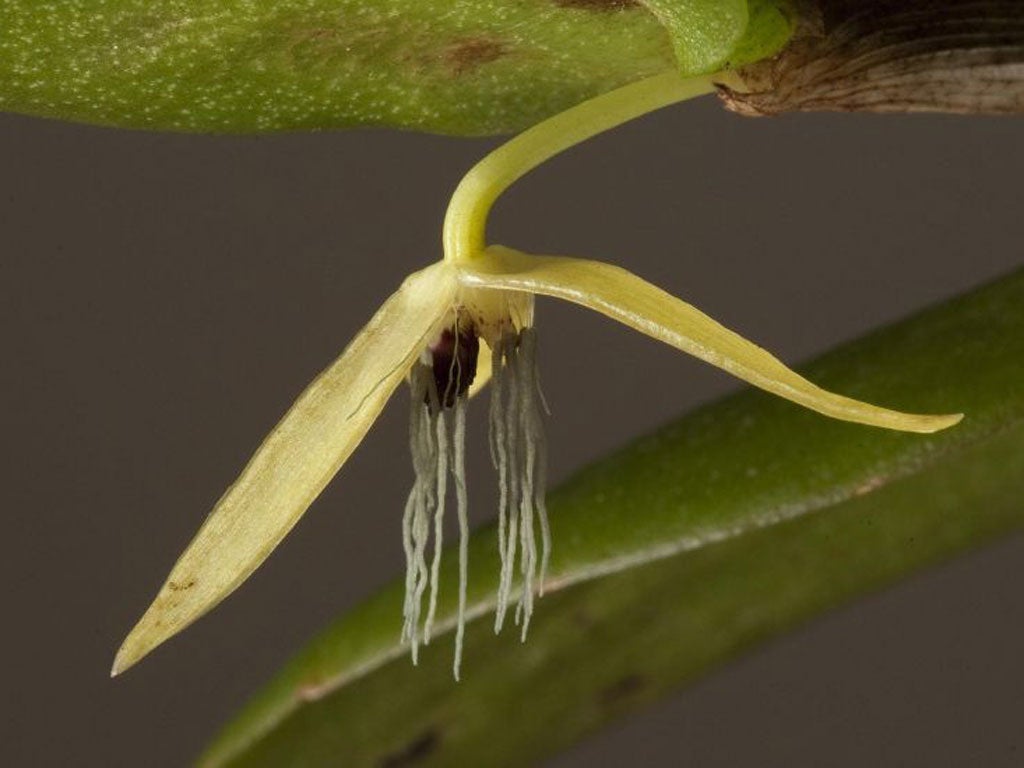World's first night-flowering Orchid discovered

The world's first known night-flowering orchid has been discovered on New Britain island, near Papua New Guinea, experts from Kew Gardens said today.
The species, Bulbophyllum nocturnum, is the first known example of an orchid which has flowers that consistently open after dark and close in the morning.
Flowers that open only at night are seen in a relatively small number of plant species, such as the queen of the night cactus, the midnight horror tree and night blooming jasmine, but never been documented in the 25,000 species of orchids.
Many orchids are pollinated by moths, but have flowers which remain open during the day even though they are mainly pollinated after dark.
The new species, whose flowers last just one night, was discovered by Dutch orchid specialist Ed de Vogel on a trip to New Britain where he was allowed to collect orchids in a logging area.
He took the species for cultivation at the Hortus Botanicus in Leiden, the Netherlands, but when the orchid put out buds they withered just as they reached the size at which they would be expected to open.
In a bid to discover what was happening Dr de Vogel took the orchid home one night where he discovered a bud that opened at 10pm.
Further observation of other buds confirmed that they opened at around 10pm and then closed the next morning around 10am, a few hours after sunrise, lasting for just one night.
He teamed up with experts including Andre Schuiteman, orchid specialist at Royal Botanic Gardens, Kew, to describe the species, in a paper published in the Botanical Journal of the Linnean Society.
The new species belongs to a group of plants which are known for their bizarre flowers, which variously resemble leggy insects, small hairy spiders to intricate sea creatures and often have thin filaments which make them move erratically in the breeze - possibly to attract insects.
The experts speculate that Bulbophyllum nocturnum is pollinated by nocturnal insects, most likely small flies such as midges.
Dr Schuiteman said: "This is another reminder that surprising discoveries can still be made. But it is a race against time to find species like this that only occur in primeval tropical forests.
"As we all know, such forests are disappearing fast. It is therefore increasingly important to obtain funding for the fieldwork required to make such discoveries."
PA
Join our commenting forum
Join thought-provoking conversations, follow other Independent readers and see their replies
Comments
Bookmark popover
Removed from bookmarks